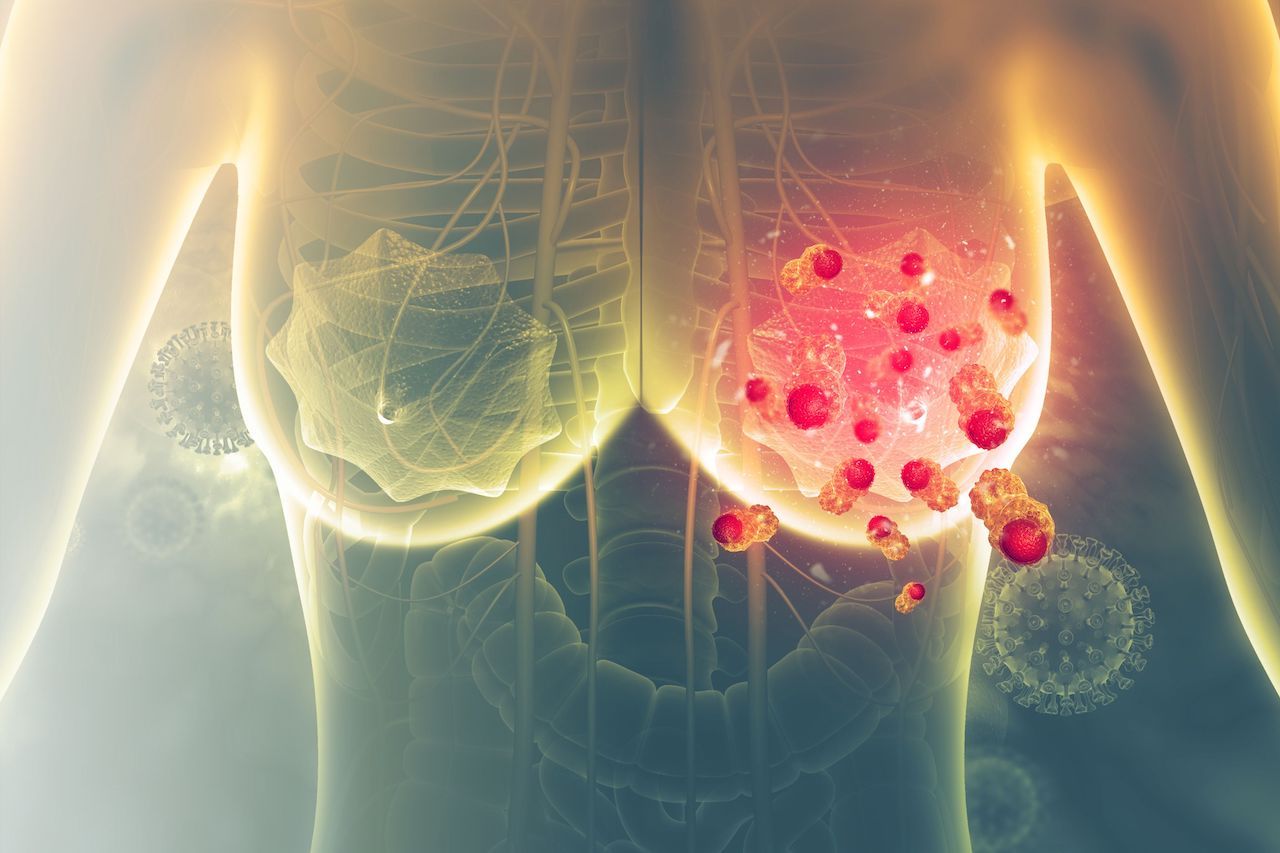Article
Ductal Carcinoma in Situ Associated With Higher Breast Cancer Death Risk
Author(s):
Findings suggest that current standard treatment does not eliminate the risk of breast cancer-specific death in the 20 years after DCIS diagnosis.
Women with ductal carcinoma in situ (DCIS) were more than 3 times as likely to die of breast cancer than women without DCIS, a large cohort study published in JAMA Network Open found.1
DCIS is early stage, non-invasive breast cancer that has not spread past the milk duct walls. It represents about 1 in 5 new breast cancer cases, but it can almost always be cured.2 Standard courses of treatment to prevent invasive recurrence include surgery, radiation, and hormone therapy.
Researchers from the Women’s College Research Institute in Toronto, Canada, used data from the Surveillance, Epidemiology and End Results (SEER) database to compare the number of breast cancer deaths in 144,524 women treated for DCIS versus women in the general population. Women in the DCIS cohort were first diagnosed between 1995 and 2014, and all underwent surgical treatment. Additionally, 47.1% received radiation therapy.
Follow-up data were available up to 2016 and analyzed in 2020. Women in the cohort were followed from diagnosis until death from breast cancer or the date of their last follow-up, and women in the general population were analyzed as a control group. Ideally, treatment for DCIS would eliminate the risk of invasive ipsilateral recurrence, but the data suggest a different scenario.
Based on the SEER data, researchers expected 458 deaths in the DCIS cohort, assuming that each woman was cancer-free at the time of DCIS diagnosis. Instead, they reported that 1540 women treated for DCIS died of breast cancer in the 20 years following diagnosis—a standardized mortality ratio (SMR) of 3.36 (95% CI, 3.20-3.53). The findings suggest that the current treatment focus, which is preventing invasive recurrence, is not effective in eliminating breast cancer death after DCIS.
Aside from the overall SMR, certain populations saw significantly higher SMRs. Women younger than 40 years at the time of DCIS diagnosis were nearly 12 times more likely to die from breast cancer (SMR of 11.95 [95% CI, 9.66-14.39]). Black women had an SMR of 7.56 (95% CI, 6.76-8.42), and the SMR for Black women diagnosed with DCIS before age 50 was 12.10 (95% CI, 9.94-14.54).
The study authors note that the investigation is not meant to inform clinical management of DCIS and that the cumulative breast cancer-specific death rate (3.3% [95% CI, 3.1%-3.7%]) in the 20 years after diagnosis is not enough to recommend chemotherapy. But they acknowledge that chemotherapy may be a consideration in those populations that saw an increased risk percentage.
“There were some women (ie, those younger that 40 years and/or Black) for whom the mortality rate approached 10%, and at this level, chemotherapy might be considered,” they wrote.“Ideally, we would be able to identify the few women with DCIS with metastatic potential from the outset and offer them systemic therapy.”
Another notable finding was that the annual mortality rate increased throughout the first 10 years after diagnosis and did not decline in the second decade. Researchers noted that revisiting the cohort in another decade would be key in establishing longer-term risks.
Study limitations included the observational nature of the data and the fact that treatment was not randomized. For that reason, researchers cannot make causal inferences based on this analysis.
References
1. Giannakeas V, Sopik V, Narod S. Association of a Diagnosis of Ductal Carcinoma In Situ With Death From Breast Cancer. JAMA Netw Open. Published online September 16, 2020. doi:10.1001/jamanetworkopen.2020.17124
2. Ductal Carcinoma In Situ (DCIS). American Cancer Society. Updated September 20, 2019. Accessed October 12, 2020. https://www.cancer.org/cancer/breast-cancer/understanding-a-breast-cancer-diagnosis/types-of-breast-cancer/dcis.html





